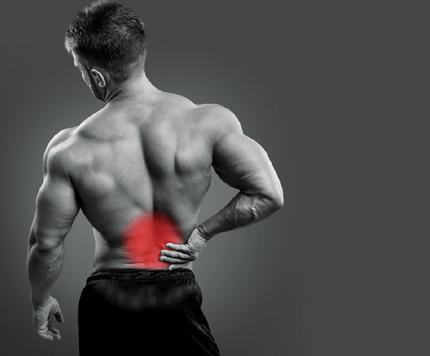Sports Medicine


Common Injuries When Training Heavy
In this article, we will discuss how injuries occur when training heavy, the different types of injuries, and different ways to fix them with exercises and treatment techniques to prevent them from happening again.
The best way to avoid an injury when training heavy is to make sure your body is working optimally and has no problems. Whenever there’s a problem, you have to differentiate between whether it’s a muscle, joint, or nerve problem. If you have a problem, you won’t be able to lift heavy. So here’s a review of some different types of muscle, joint, and nerve problems.
A mild muscle strain from lifting heavy will usually resolve itself in a few days to weeks. Usually, rest and some foam rolling can help restore normal muscle function. The mild strain occurs when the load is more than the muscle can handle due to fatigue or under-recovery from the last workout. If you really lifted heavy and the stress is too great on the muscle, causing a moderate to severe muscle strain, then a larger amount of muscle damage can occur and scar tissue or adhesions can form that will alter the muscle movement patterns and joint biomechanics. This usually has to be treated with massage, myofascial technique, or active release technique that will break apart the adhesions and restore normal muscle movement patterns and joint biomechanics. Rest and foam rolling isn’t usually very effective when it’s this severe.

When a heavy weight-training injury is more severe, not only will the muscle be damaged, but so will the joints. A common injury seen in lifting heavy is in the spinal column or the hip area called the sacroiliac joint. When the joint and joint capsule are irritated, it sets up a reflex muscle spasm around the area, which is called muscle splinting. The muscle splinting prevents the joint from moving, because if the joint moves in its inflamed state, it will hurt. It’s no different than when you break your arm and splint it to prevent movement in that area so it won’t hurt. The body does this naturally.
Fixing this is a little more involved. The main goal is to restore normal motion in the joint, but the muscle may be in too much of a spasm. So to treat the joint, you may have to treat the muscle first so joint motion is allowed. Once the muscle is relaxed enough, a chiropractic adjustment would help restore normal joint motion. This can take weeks, depending on the severity.
When the low back injury is really severe, usually the disc and nerve get involved. The disc can get minor tears in it and produce a small bulge that may or may not compress the nerve. Some studies have shown that it’s the inflammation from the disc being bulged that causes the pain and irritation, and not just the disc compressing on the nerve. One of the theories is that the disc inflammation produces free radicals that irritate the outside of the nerve (the myelin sheath), which can produce nerve pain going down the leg called sciatica. The focus is to reduce the inflammation caused by the disc and decrease specific free radicals that irritate the nerve with vitamin E and selenium, which are antioxidants. If the disc is compressing on the nerve, traction therapy is very helpful to reduce the disc nerve compression. If it’s severe enough, surgery may be another solution. Full recovery can take months.

Once the muscle, joint, disc, and nerve are treated and fully functional, it’s important to do rehabilitation exercises to restore normal strength to previously damaged muscles. One of the most important concept in low back stabilization is to train the small muscles that surround each vertebral joint. Some of the best exercises for this are bracing exercises, isometric holds such as planks, and small, focused movement patterns such as pilates to strengthen the small supporting muscles.
Some tips to help prevent common heavy weight-training injuries:
Whenever you lift the barbell from the floor, keep it as close to your body as possible. The further it is away from your body, the more weight the low back will have to take. It’s called the law of leverages.
When you squat, deadlift, or overhead press with heavy weight, flex the abdominals, as this will produce a girdle-like effect and help support and stabilize the low back.
If you want to stay pain-free, check out out "10 most common causes of injury" article here!

